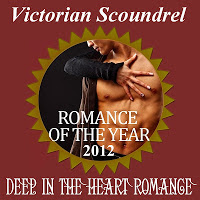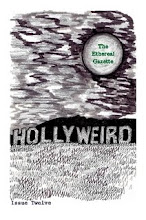
This is an article that I wrote for the Romance/Love Newsletter for Writing.com last fall. Enjoy.
The Romantic Heroine
by Stephanie Burkhart
A modern heroine has a lot to live up to. Our society is so fast paced, and yet she’s suppose to embody that perfect balance between being a woman, and living up to today’s high expectations. So what is she suppose to look like? Let’s start there.
A big element to your heroine is attractiveness, but the romantic heroine shouldn’t be drop dead gorgeous – she should be convincingly attractive to the reader.
What does that mean?
The everyday woman usually doesn’t have model looks. By weaving in realistic physical flaws you can paint a picture of any everyday romantic heroine. Perhaps she thinks she’s too tall. Or she doesn’t like her nose. She could be a plus size, or doesn’t care for her curly hair. Most women can connect with those elements. The big thing to keep in mind as you paint your heroine is to keep her self-respect intact. If she doesn’t respect herself, then how can the hero? Our heroine may not like her nose, but her self-respect for her body and her appearance can’t suffer. If it does, then she isn’t convincing as a romantic heroine.
The Qualities a Romance Heroine Embodies
For a modern reader, a romantic heroine must embody three things: an ability to connect with the reader, strength, and she must deserve the hero. Most modern writers try to deliver.
Food for thought: Have you read “The Great Gatsby” by F. Scott Fitzgerald? Think of his heroine in the story, Daisy. Written in the 1920’s, Daisy doesn’t embody the modern romantic heroine. She lacks strength and she doesn’t deserve Gatsby – yet in the 1920’s, Daisy cut a romantic figure for her contemporary audience. Nowadays, Daisy would be frowned upon.
Keep in mind romantic norms have changed over the years. Modern readers expect heroines, even those in historical, to embody modern trends. This might prove tricky in historical since women were treated differently and expected to act differently, but it is do-able to have historical heroine portray modern norms.
Connect with Readers
If the heroine can’t connect with the reader, then she isn’t convincing. Her physical appearance is only one aspect of connecting with readers. There are other aspects as well. For one: a sympathetic past. This doesn’t mean she suffered an abusive set of parents per se, but she has to be shaped by previous experiences. Was she raised by an aunt and uncle? Did she have a stern father? Was she the only girl in a family of five boys?
NOTE: The reader doesn’t need to know all about the heroine’s past in the first chapter. Reveal it slowly, over time, preferably to the hero of the story. An info dump on the heroine’s past in chapter one is a sure story killer.
Strength
Heroines don’t need to be physically strong, but they must embody an inner strength that the reader can relate it. She may have problems, but she has to have the inner strength to overcome them. She has to be able to do the right thing when the time comes.
She Must Deserve the Hero
Our hero is strong in body and character. He doesn’t lie, unless he think he’s protecting the heroine. He doesn’t steal. H e strives to do the right thing. Our heroine must embody these traits as well.
She may be looking for a romance, but she doesn’t need it. She can take care of herself. Finding Mr. Right is a bonus for her.
The same rules apply to our women as they do our romantic men. They have dignity. They’re honest. They’re tenderhearted toward their men.
So when composing a modern heroine, even a historical one, remember to be convincing, show her inner strength, and make her worthy of her man.















Our heroes and heroines certainly do have a lot to live up to. And if an author slips and allows her heroine to do something we don't like, or the hero, for that matter, our readers will call us up on it. Editors usually do a great job in catching these little nuances. Very good advice, Steph--thanks for sharing your wisdom. Celia
ReplyDeleteWhat a great post. Thanks! It's amazing how real our characters become to both us and our readers.
ReplyDeleteGreat post, and I absolutely agree with you. If you can't get the reader to like your heroine and hero, you have lost them.
ReplyDeleteRegards
Margaret
Excellent article, Steph! I will be sure to keep the link as a reference. I run across manuscripts all the time where I can't relate to the heroine as a reader. Your article will describe why better than I ever could :) Thanks for posting it here!
ReplyDeleteSaw you were blogging from the LASR loop. I really enjoyed this article.
ReplyDeleteThanks
Thanks everyone for popping in. I agree - you've got to hook the reader with the hero and heroine and for me, what's important is that the heroine has to deserve the hero. It's okay for her to be "kick ass", "clever," "compentant," but she has also to display a vulnerablity that can pull readers in. I'm glad the article was informative.
ReplyDeleteSmiles
Steph
I agree Stephanie, you need to give characters flaws to make them appear human. But balanced with strength, intelligence and humour, and passion of course.
ReplyDeleteGreat post. It really embodies the essence of a modern heroine and is very insightful.
ReplyDeleteThanks for sharing it